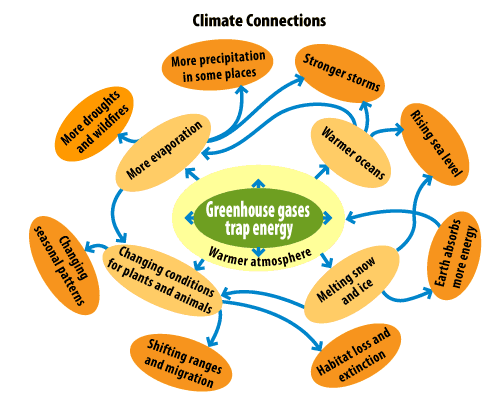Deepening the understanding of climate concepts [Text]
Deepening the understanding of climate concepts
You might have learned about the basics of climate concepts from WWF adapt web portal. Albeit a repetition, reading the text below in this section will help you deepen the understanding of the basics of climate change before we start learning about the impacts of climate change and adapting to climate change in the next sections. If you are confident that you understand the basic concepts of climate change very well, you can skip the following section and go to the evaluation page. If your score is less than 6 come back and read the following section.
Climate is what we expect, weather is what we get. – Mark Twain
Climate refers to the average weather conditions in a certain place over many years (usually at least 30 years). For example, the climate in Pyongyang, North Korea is cold and snowy in the winter, while in Colombo, Sri Lanka climate it is hot and humid. The average climate around the world is called global climate. When scientists talk about global climate change, they're talking about the global climate and a pattern of change that's happening over many years. One of the most important trends that scientists look at is the average temperature of the Earth, which has been increasing for many years. This is called global warming.
Rising global temperatures lead to other changes around the world, such as stronger hurricanes, melting glaciers, and the loss of wildlife habitats. That's because the Earth's air, water, and land are all related to one another and to the climate. This means a change in one place can lead to other changes somewhere else. For example, when air temperatures rise, the oceans absorb more heat from the atmosphere and become warmer. Warmer oceans, in turn, can cause stronger storms.

Figure 1: Global warming can lead to a variety of other changes
Weather versus Climate
Weather is a specific event or condition that happens over a period of hours or days. For example, a thunderstorm, a snowstorm, and today's temperature -- all describe the weather.
As explained earlier, climate refers to the average weather conditions in a place over many years (usually at least 30 years). For example, the climate in Pyongyang, North Korea is cold and snowy in the winter, while in Colombo, Sri Lanka climate it is hot and humid. The average climate around the world is called global climate.
Weather conditions can change from one year to the next. For example, Pyongyang might have a warm winter one year and a much colder winter the next. This kind of change is normal. But when the average pattern over many years changes, it could be a sign of climate change.
Here's an easy way to remember the difference between weather and climate: Climate helps you decide what clothes to buy, and weather helps you decide what clothes to wear each day.
How and why is the climate changing – Today’s climate change
More than 100 years ago, people around the world started burning large amounts of coal, oil, and natural gas to power their homes, factories, and vehicles. Today, most of the world relies on these fossil fuels for their energy needs. Burning fossil fuels releases carbon dioxide, a heat-trapping gas, into the atmosphere, which is the main reason why the climate is changing.
Heat-trapping gases are also called greenhouse gases. They exist naturally in the atmosphere, where they help keep the Earth warm enough for plants and animals to live. But people are adding extra greenhouse gases to the atmosphere. These extra gases are causing the Earth to get warmer, setting off all sorts of other changes around the world—on land, in the oceans, and in the atmosphere. And these changes affect people, plants, and animals in many ways.